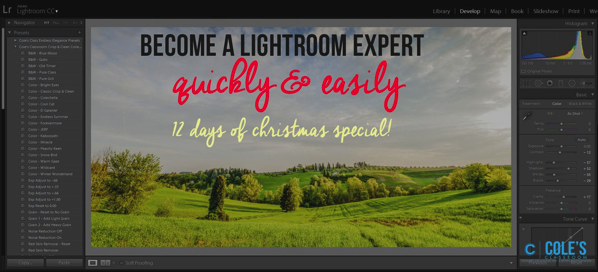Thomas Shahan’s tips for successful macro photography
Thomas Shahan is a macro photographer and artist from Tulsa Oklahoma who specializes in entomology and traditional relief printmaking.
Thomas’s interest in macro photography began when he started watching jumping spiders in his backyard. After studying art at the University of Oklahoma, he left for Oregon to work in the Oregon Department of Agriculture’s entomology lab. There, he worked as a digital imaging specialist, taking high magnification focus-stacked photographs and SEM images of arthropods – good practice for macro photography.
In this article, Thomas shares advice for successful closeup photography of bugs, insects and small animals. Click through for his top tips, and be sure to check out the video we made with Thomas recently, embedded at the bottom of each page.
All images by Thomas Shahan, used with permission.
Tip #1: Bugs are everywhere
Wolf Spider – sp, hogna, shot in Norman, Oklahoma using a Pentax 50mm F1.7, reversed on tubes at ~F16 equiv.
You don’t need to travel to exotic locations to take pictures of bugs – they’re everywhere. A few minutes spent turning over stones and logs in your back yard, or local park will reveal plenty of creepy-crawlies.
Bugs are most active in the middle of the day but they can be found at any time, even at night.
Tip #2: Learn about your subjects
A jumping spider – sp. psecas, shot in Peru with a Vivitar 55mm F2.8 at ~F10 equiv, on a 2x teleconverter.
Sure, to begin with you might just explore your yard and see what you come across, but the more you know about bugs and insects, the more likely you’ll be able to find them, and get the shot that you want.
Perhaps you live in a part of the world where a certain species is particularly common. Perhaps the particular spider, or fly that you want to photograph only comes out at a certain time of the day, or likes to hang out in a particular kind of environment. The more you know, the better your chances of finding it, and getting a great shot.
Tip #3: You don’t need expensive gear
We were using the Fujifilm GFX 50S for our recent shoot in Idaho, but you don’t need such expensive equipment to get great macro shots. Thomas’s usual setup (pictured here) is centered around a midrange Pentax DSLR, and a collection of second-hand lenses and extenders.
A newer camera with a good live view mode and a dedicated macro lens will certainly make life easier, but they’re not essential to getting great shots.
Tip #4: Use diffused light
A bess beetle – sp. passalid, captured during our shoot at the Ketchum Bug Zoo, Idaho.
Many bugs, like this bess beetle are glossy, so try to shoot them under diffuse light, to avoid distracting ‘hot spots’ on their shells. Experiment with different kinds of diffusion material for both natural and flashlight.
Tip #5: Small apertures increase depth of field
A tarantula, captured during our shoot at the Ketchum Bug Zoo, Idaho.
Shooting at small apertures will give you more depth of field, meaning that more of your picture will be in focus. This is essential when taking pictures of very small insects and bugs, but also useful with larger animals, like this tarantula (shot at F10).
The downside of shooting at small apertures is that it cuts out a lot of light, so you should experiment with using flash as your main light source. A relatively low flash output should work in daylight and it won’t scare away your subject.
Tip #6: Shoot Raw, at low ISOs
A bearded dragon, captured during our shoot at the Ketchum Bug Zoo, Idaho.
Shooting in Raw mode will let you get the best possible resolution out of your camera, and keeping your ISO sensitivity as low as possible means that you won’t need to worry too much about noise levels. Shooting Raw also gives you a lot of scope for post-capture tonal adjustment.
Tip #7: Don’t be afraid to crop
A bess beetle – sp. passalid, captured during our shoot at the Ketchum Bug Zoo, Idaho.
Don’t worry if your lens can’t focus super close – if you’re working with a high megapixel camera, you can always crop in afterwards. This image of a bess beetle is a pretty heavy crop from the GFX 50S’s 50MP sensor, but the output resolution is still very good, at around 15MP.
Tip #8: Focus manually
A jumping spider – sp. Habronattus americanus, shot in Oregon with a Vivitar 55mm F2.8 at ~F16 equiv, on a 2x teleconverter.
If you are working at very close distances, turn off AF and focus manually, then bracket focus by moving your camera slightly back and forth.
Tip #9: Experiment with color and contrast
Madagascar hissing cockroach – sp. gromphadorhina, captured during our shoot at the Ketchum Bug Zoo, Idaho.
Experiment with color and contrast. Simple colored backgrounds can be very effective. Here, a bright red piece of cardboard contrasts with the warm tones in the carapace of a Madagascar hissing cockroach.
Tip #10: Take a lot of pictures!
Horsefly – sp. Tabanus, shot in Tulsa OK with a Vivitar 55mm F2.8 at ~F10 equiv, on a 2x teleconverter.
Macro photography is fun, but it’s tough – especially when it comes to flies and other small, fast-moving animals. Increase your odds of getting a great shot by taking lots of pictures!
Thomas Shahan’s tips for successful macro photography
We recently spent a couple of days with Thomas down in Ketchum Idaho, to get a feel for how he approaches one of the most challenging kinds of photography there is – macro shots of bugs and small animals.
Check out more of Thomas’s work on Flickr
This video is sponsored content, created in partnership with Fujifilm. What does this mean?
Articles: Digital Photography Review (dpreview.com)


























You must be logged in to post a comment.